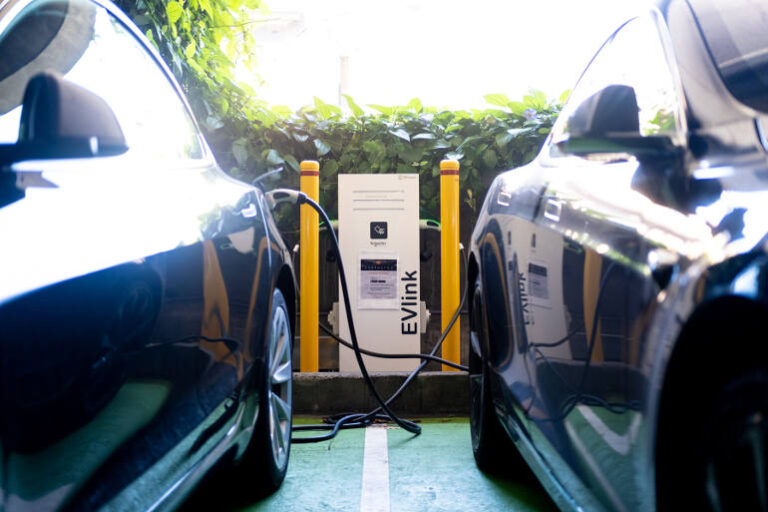Electric Vehicle (EV) transition is an inevitability for all fleet managers, but the transition is not as simple as just choosing vehicles. If you are looking at making the shift to an electric fleet, here are some important first steps to take before ordering vehicles, to best navigate the process and avoid hidden costs and delays.
Assess your fleet’s needs and goals
A transition to electric vehicles can be led by company Environmental, Social and Governance (ESG) policies, by financial considerations, by individual preferences or by mandated directives. In all cases, it is wise to take a step back and consider the whole of fleet and what the fleet will look like in five or ten years, and take a moment to plan the steps of transition from where you are to where you will need to be at a future point in time, when all vehicles will be electric. Evaluate the size of your fleet, typical driving patterns, and the range requirements of your vehicles. Consider the types of vehicles you currently operate and determine which ones are most suitable for electrification. Research which vehicles are currently available in Australia, and which are forecast to arrive. This evaluation will serve as the foundation for your transition plan.
Understand the charging infrastructure
One of the primary concerns when transitioning to electric vehicles is establishing a robust charging infrastructure. You’ll almost certainly need to install dedicated chargers, but where, and which ones to install, depend on a variety of factors. Where are the cars parked during the day, and where at night? What is the electrical capacity at the workplace for charging? What is the dwell time (the time parked) for vehicles at the workplace? How many cars will need to be charged daily? Can staff charge their own cars at work? Will the business be moving in the short term? In some cases switchboard works may need to be done to allow for charging, or upgrades to electrical supply. This will quickly turn into an expensive exercise and so must be considered before ordering 10 cars from Tesla. These and other considerations can lead to a baffling array of decisions, and at this point fleet managers may find themselves quickly outside of their jurisdiction. Bringing internal stakeholders together early to make these decisions, and using a specialist consultant can smooth the process.
Financial analysis and incentives
Conduct a financial analysis to understand the costs associated with transitioning to electric vehicles. Evaluate the upfront costs of purchasing or leasing EVs, along with potential savings in fuel and maintenance expenses. Financial incentives, such as tax credits, grants, or subsidies are available from state and federal governments, notably Fringe Benefit Tax (FBT) exemption on new vehicles purchased after July 2022[1], and ARENA grant funding for fleet transition (closing June 2023)[2]. Exploring these can make transition much more financially viable, and reduce the upfront costs of transition.
Pilot programs and vehicle selection
Consider implementing pilot programs to test the performance and suitability of electric vehicles within your fleet. Select a small number of EVs and evaluate their real-world performance, including range, charging time, and overall efficiency. Consider which drivers and usage cases best suit the first EV’s in your fleet. Gather feedback from drivers and maintenance staff to assess their experiences and address any challenges that arise. This pilot program will help you fine-tune your transition plan and ensure a seamless transition to an all-electric fleet.
Develop a comprehensive charging strategy
A well-designed charging strategy is critical to the success of your fleet’s electric transition. As well as workplace charging, you may need to consider using at home charging and public charging networks. The vehicles you chose will have different charging capabilities, and their use patterns will determine different charging needs. If the business has solar installed, charging during the day makes sense for vehicles that don’t need to be constantly on the road, and load management systems may be needed to stay within a buildings overall capacity. Choose the right charging software which can help to avoid peak electricity demand times and take advantage of off-peak rates. A charging strategy can ensure your transition is cost effective, provides efficient charging, and doesn’t trip building circuits. Do ensure you’re future proofing charging installations by planning for expansions down the track, rather than planning just for the cars you’re acquiring now.
Train drivers and fleet staff
Transitioning to electric vehicles involves a learning curve for both drivers and fleet staff. Many drivers will be encountering electric driving for the first time, and may be resistant to the change. Provide comprehensive training programs to familiarise drivers with the unique features and driving characteristics of different electric vehicles, such as charging behaviour, understanding vehicle range, single pedal driving, and regenerative braking. Educate maintenance staff on the specific requirements of EV maintenance, including battery management, software updates, and diagnostics. Fire safety in parking garages should also be considered, and EV’s and charging stations should be included in fire safety plans. Building knowledge and skillsets will enable your team to embrace electric mobility confidently.
Transitioning a fleet to electric vehicles is an important step towards sustainable and environmentally friendly transportation, and cannot be avoided by Fleet Managers. By following these essential first steps, you can effectively navigate the transition process and unlock the benefits of electric mobility. With careful forward planning and execution, you can successfully transition your fleet to electric vehicles and contribute to a greener future.
[1] https://www.ato.gov.au/Business/Fringe-benefits-tax/Types-of-fringe-benefits/fbt-on-cars,-other-vehicles,-parking-and-tolls/electric-cars-exemption/
[2] https://arena.gov.au/funding/driving-the-nation-program/





